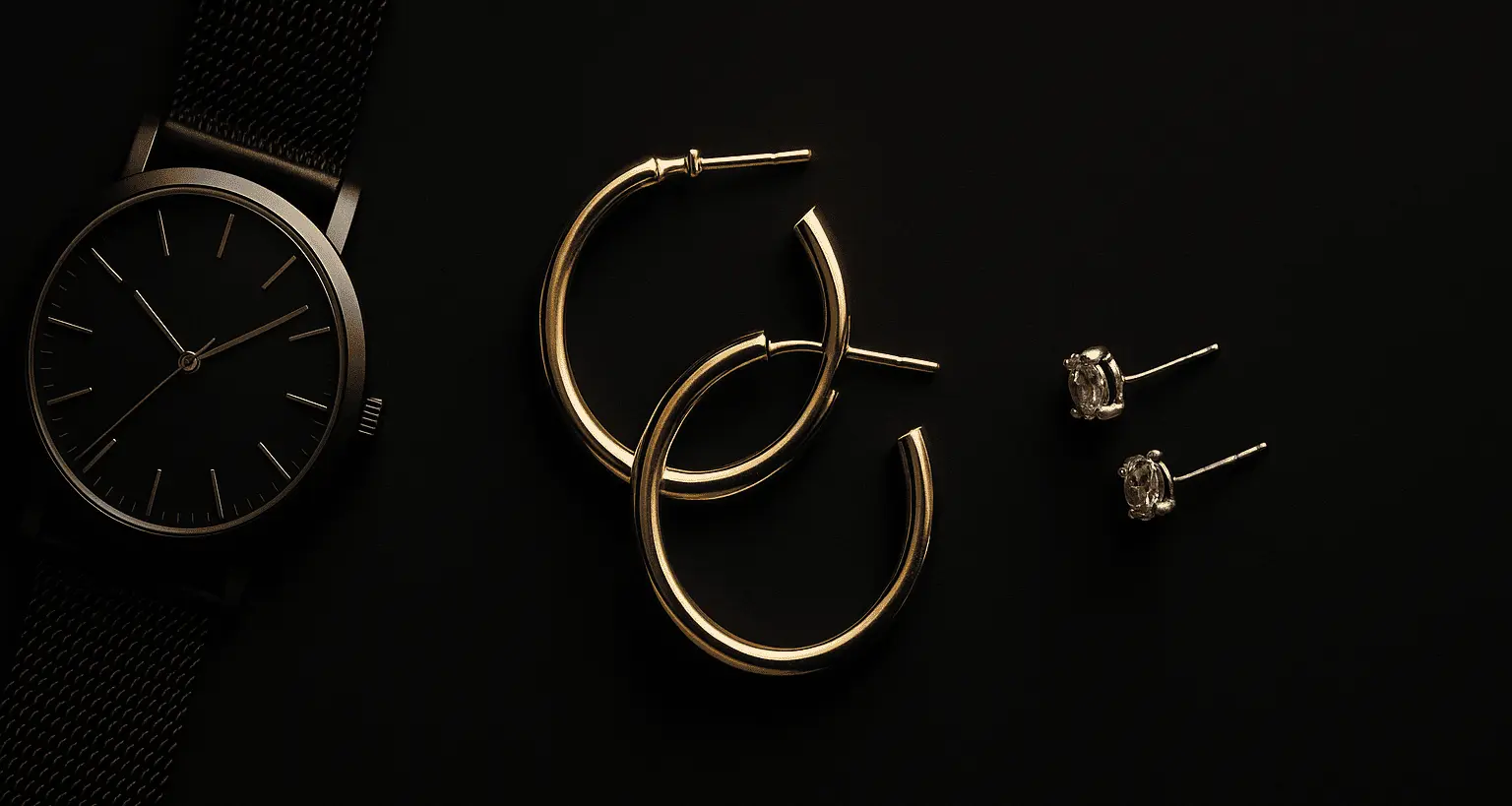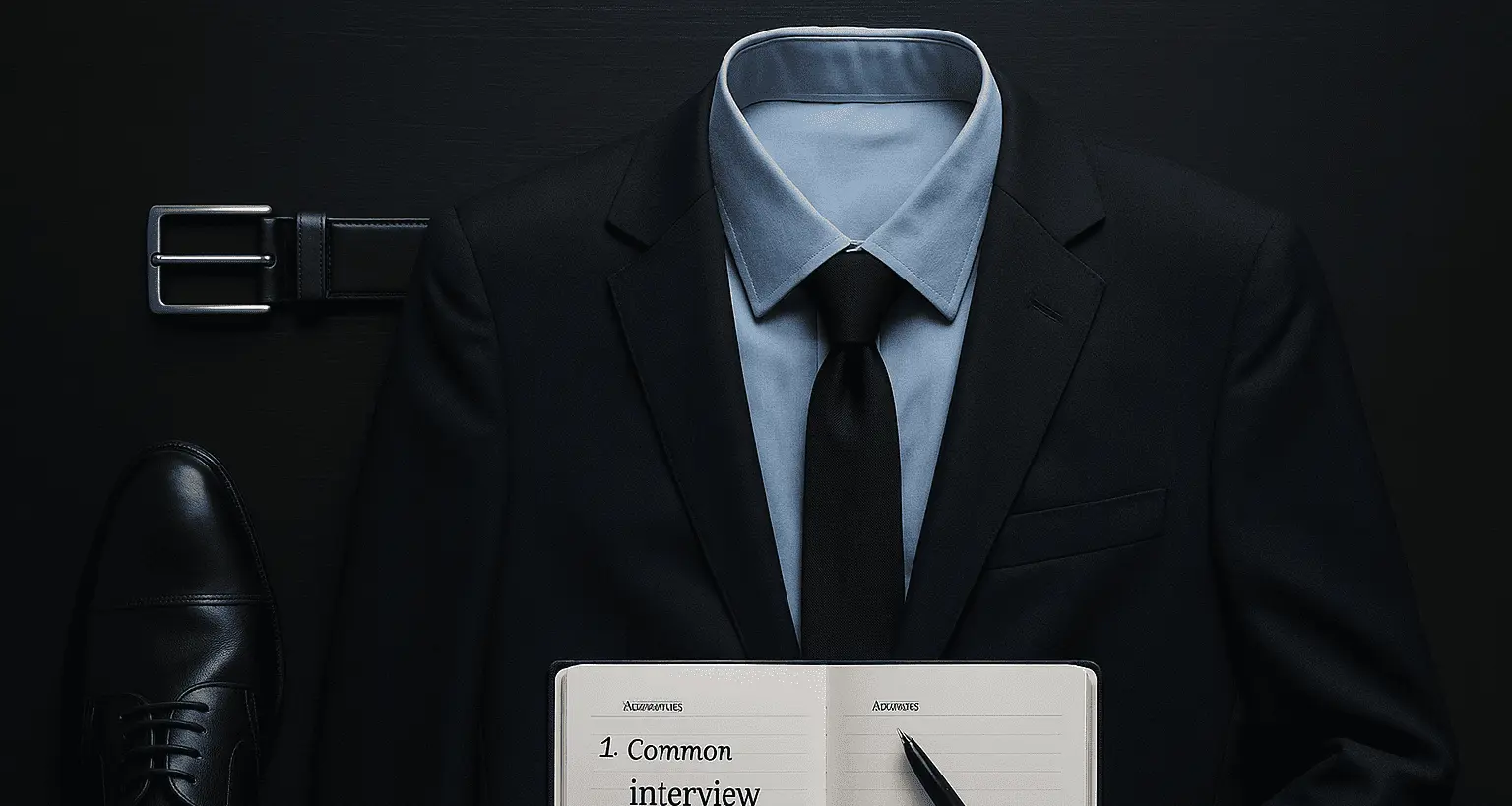Accessorizing for a job interview requires precision and restraint. While your outfit might be perfectly tailored, the wrong jewelry choice can instantly undermine your professional image. From jingling bracelets that distract interviewers to bold statement necklaces that overshadow your qualifications, jewelry mistakes happen more often than you'd think. Yet the right pieces—subtle, polished, and intentional—enhance your appearance without pulling attention away from your competence.
Understanding what jewelry is appropriate for a job interview means grasping the fine line between looking put-together and looking overstated. Different industries have different expectations: a tech startup might appreciate minimal, modern pieces, while a conservative law firm expects classic restraint. This comprehensive guide breaks down jewelry selection by industry, explains the psychology behind accessory choices, and provides specific recommendations ensuring you'll wear pieces that strengthen rather than distract from your professional presentation. By the end, you'll know exactly which jewelry elevates your interview appearance.
Why Jewelry Matters in Job Interview Impressions
Interviewers notice details, even subconsciously. Research in nonverbal communication shows that accessories influence how people perceive competence and trustworthiness. Excessive or distracting jewelry can trigger negative associations—studies suggest that overly flashy pieces make candidates seem less professional and focused on appearance rather than substance. Conversely, thoughtfully selected jewelry projects polish, attention to detail, and cultural awareness. The jewelry you choose communicates whether you understand workplace norms before you utter a single word.
Beyond perception, jewelry affects your own confidence and comfort during the interview. If you're worried about a bracelet jingling during your response or a necklace drawing eyes downward, that mental distraction diverts energy from articulating your strengths. When your accessories are appropriate and subdued, you can focus entirely on making your case. This psychological freedom often shows in your demeanor, making you appear more composed and authoritative. The goal isn't to disappear—it's to ensure what jewelry is appropriate for a job interview enhances rather than complicates your presentation.
The Core Rule: Less Is More
The golden principle guiding interview jewelry choices is simplicity and subtlety. Professional contexts reward restraint. Before adding any piece, ask yourself: "Does this enhance my professional appearance, or does it draw attention to itself?" If jewelry competes for focus, it's too much. Aim for pieces that are noticed only if someone's explicitly looking, not immediately apparent upon meeting. Quality materials like gold, silver, and pearls project timelessness. Avoid trendy pieces that might seem dated or unprofessional.
Jewelry by Type: Practical Recommendations
Watch Recommendations for Interviews
A watch is the most universally appropriate jewelry accessory for interviews. It's functional, professional, and expected. Choose a classic timepiece with a quality leather or metal band. For men, a traditional analog watch with minimal branding works universally. For women, a clean, elegant watch in silver or gold suits all industries. Digital watches are acceptable in tech environments but appear too casual in formal settings. Avoid sports watches, smartwatches, or anything oversized. A good watch isn't flashy—it's simply there, reliable and understated.
Rings: Subtlety Matters Most
Rings require restraint. A simple wedding band or engagement ring appears professional and appropriate across all industries. Beyond that, less is better. A single additional ring works—perhaps an elegant band or modest signet ring. However, rings on every finger, large cocktail rings, or pieces with loud designs distract and potentially suggest excessive focus on jewelry rather than qualifications. Avoid rings that jingle or move dramatically when you gesture. For what jewelry is appropriate for a job interview, ring rules apply universally: keep quantity minimal and style classic.
Necklaces: Keep It Covered
Necklaces present a particular challenge—longer pieces draw eyes downward unnaturally, and statement necklaces compete for attention. For formal interviews, skip necklaces entirely or choose delicate, short chains close to the collarbone that barely peek from under your shirt or blouse. If wearing a necklace, ensure it's subtle enough that an interviewer wouldn't immediately notice it. Avoid anything with movement or noise—dangling pieces or charm necklaces are inappropriate. In creative industries, a refined pendant might be acceptable, but even then, restraint applies. Conservative rule: if you're considering a necklace, reconsider whether you actually need it.
Bracelets: Noise Is the Enemy
Bracelets are among the biggest interview jewelry mistakes. Multiple bracelets jingling while you gesture or write creates constant distraction. If wearing bracelets, limit yourself to one, and choose designs that are silent and understated. A simple leather or metal band works. Avoid chain-link bracelets that clink, beaded pieces that rattle, or anything with charms. Some professionals skip bracelets entirely during interviews, and that's often the safest choice. Test your bracelets beforehand—if you can hear them moving, they're too noisy for interviews. What jewelry is appropriate for a job interview almost never includes attention-grabbing wrist wear.
Earrings: Small and Professional
Earrings are acceptable and even expected in many professional contexts, particularly for women. The rule: keep them small and stationary. Simple studs in pearl, diamond, or metal are universally professional. Small hoop earrings work too, provided they're refined rather than chunky. Avoid dangling earrings that move when you turn your head, drawing attention from your face. Chandelier earrings, statement pieces, or anything that jingles is inappropriate. For formal industries like law or finance, conservative studs are the safest bet. In creative fields, slightly larger or more interesting studs might work. For men, earrings remain unusual in traditional interviews—if worn, keep them minimal and professional.
Brooches and Pins: Use Sparingly
Brooches are an elegant way to add polish when used judiciously. A single, small, quality brooch pinned to your blazer can elevate your appearance without overdoing it. Choose classic designs in metal or pearls rather than trendy, colorful pieces. Avoid multiple pins or large statement pieces. In formal industries like law or executive roles, a subtle brooch works beautifully. In casual environments, pins might be unnecessary. Think of brooches as the punctuation mark at the end of your outfit, not the headline.
Industry-Specific Jewelry Guidelines
Finance, Law & Consulting
Conservative excellence guides jewelry choices here. Wear minimal jewelry—watch, wedding band if applicable, small professional earrings, and little else. Choose metals in gold or silver. Skip necklaces. Bracelets should be absent or single and understated. Any jewelry should whisper rather than announce. These industries reward demonstrating you understand traditional professional norms, and jewelry restraint communicates exactly that.
Technology & Startups
While more casual than finance, startups still expect professional jewelry choices. Skip oversized or trendy pieces. A watch and simple earrings work well. Modern, minimalist designs fit the aesthetic better than ornate pieces. Understand what jewelry is appropriate for a job interview here means choosing items that feel intentional rather than flashy. Quality and simplicity still matter, even in relaxed environments.
Creative Fields & Design
Creative industries allow slightly more expression through jewelry. You might wear a more distinctive piece or interesting bracelet. However, even here, silence and sophistication matter. Choose something that demonstrates taste and intentionality rather than shock value. Your jewelry should align with your creative aesthetic and industry norms. A designer's jewelry choices tell a story—make sure it's the story you want to tell.
Healthcare & Education
These industries value professionalism and practicality. Keep jewelry minimal and functional. A watch and simple earrings suffice. Avoid anything that might catch on things or pose health concerns. These fields appreciate that you understand professional boundaries and patient-focused priorities. Jewelry should enhance your professionalism, not complicate it.
Retail & Hospitality
Reflect the brand's image through your jewelry choices. Luxury retail allows more refined, polished pieces. Casual hospitality remains professional yet approachable—simple earrings and watch work perfectly. Visit the location beforehand, observe current employees' accessories, and mirror their level of polish. Your jewelry should align with the brand's aesthetic while remaining professional.
Metals and Materials: What Works Best
Gold conveys warmth and timelessness, working well across industries and skin tones when quality is evident. Silver projects modern sophistication and pairs well with professional clothing. Pearl represents classic elegance, particularly appropriate for formal settings. Diamond in subtle pieces suggests quality without ostentation. Steel and titanium fit tech environments beautifully. Avoid costume jewelry, which appears cheap and unprofessional. Poor-quality materials cheapen your overall appearance regardless of design. Invest in pieces made from genuine materials that age well and look polished after years of wear.
What Jewelry to Absolutely Avoid
Multiple piercings beyond one per ear come across as unprofessional in traditional settings. Body jewelry like nose rings or eyebrow piercings should be removed for formal interviews. Ankle bracelets are too casual and draw inappropriate attention. Religious jewelry (though not forbidden) should be modest rather than prominent. Novelty pieces or character jewelry immediately undermine professionalism. Anything too shiny or glittery appears costume-like. Pieces that make noise when you move distract from your message. Trendy items might seem dated by interview time. Oversized designs compete for attention with your qualifications. Damaged or tarnished jewelry suggests carelessness about details.
Context and Considerations
Cultural and Religious Considerations
Your authentic jewelry that reflects cultural or religious identity should be worn with confidence. Quality and polish matter more than style. A beautifully maintained bracelet, pendant, or ring that's culturally significant and tastefully worn actually strengthens interviews by demonstrating confidence and authenticity. However, understand industry context—conservative fields require these pieces to be refined and understated. Employers are increasingly valuing diversity and authentic self-presentation. What jewelry is appropriate for a job interview includes meaningful pieces worn with professionalism and intentionality.
Virtual Interview Jewelry Tips
On video, jewelry appears larger and more prominent than in person. Opt for smaller, simpler pieces than you'd wear in-person. Avoid reflective materials that catch light and distort on camera. Skip dangling earrings that move with head turns—fixed studs work better on video. Remember your camera angle—if it's chest-up framing, necklaces become more visible. Test your jewelry on camera beforehand to see how it appears. What jewelry is appropriate for a job interview on video requires slightly different thinking than in-person meetings.
Jewelry as Confidence Insurance
Some candidates use a specific piece of jewelry as a confidence ritual—a watch inherited from a mentor, a ring from a loved one, or earrings worn to every important meeting. If this applies to you, absolutely wear that piece. Genuine confidence shows through and affects how interviewers perceive you. Just ensure the piece remains professional and doesn't become a distraction you're concerned about. Your psychology matters as much as perception.
Final Pre-Interview Jewelry Checklist
The night before: Lay out your intended jewelry and evaluate it against your outfit. Does it complement without competing? Is everything clean and polished? Test for noise: Move your hands naturally—do bracelets or rings jingle? If yes, reconsider. Check fit: Ensure nothing slides, pinches, or requires constant adjustment during the interview. Verify appearance: Look in the mirror with good lighting and consider how it appears to someone across a table. Morning of: Put on jewelry last, after your outfit is complete, to evaluate the total effect. Make a final call—if something feels like it might distract you, remove it.
The Psychology of Restraint
Here's the truth about interview jewelry: interviewers shouldn't notice it. The successful interview isn't remembered for your accessories—it's remembered for your insights, energy, and fit with the role. Jewelry should be the background score to your qualifications, not the main event. By understanding what jewelry is appropriate for a job interview and keeping selections minimal and refined, you ensure every conversation stays focused on what matters: your ability to excel in the role.
Master interview preparation with comprehensive interview prep. Learn about interview outfits and dress code guidelines. Practice with AI mock interviews.







